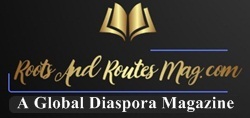Breaking Stereotypes: Challenging Assumptions About Cultural Identities

Cultural stereotypes have long plagued societies, perpetuating harmful assumptions and limiting the understanding of diverse cultural identities. From preconceived notions about race and ethnicity to gender roles and societal norms, these stereotypes often lead to discrimination, prejudice, and inequality. However, in today’s interconnected world, there is a growing movement to challenge these assumptions and embrace the rich tapestry of cultural diversity. Let’s explore how breaking stereotypes can lead to greater understanding, acceptance, and appreciation of cultural identities.
- Embracing Cultural Fluidity: Traditionally, cultural identities have been viewed as fixed and immutable, leading to the perpetuation of stereotypes and misconceptions. However, the concept of cultural fluidity challenges this notion by recognizing that individuals can embrace multiple cultural identities and influences. Whether through language, cuisine, or traditions, people navigate complex cultural landscapes that defy narrow categorizations. By embracing cultural fluidity, we can celebrate the diversity of human experience and reject the limitations of rigid cultural stereotypes.
- Challenging Racial Stereotypes: Racial stereotypes have long been used to marginalize and discriminate against certain racial and ethnic groups. From the portrayal of Asians as model minorities to the stereotype of Black individuals as inherently violent, these harmful assumptions perpetuate systemic racism and inequality. Challenging racial stereotypes requires unpacking the underlying biases and prejudices that fuel these misconceptions. By amplifying diverse voices and experiences, we can challenge stereotypes and promote a more inclusive and equitable society.
- Defying Gender Norms: Gender stereotypes dictate rigid expectations and norms based on perceived notions of masculinity and femininity. These stereotypes limit individuals’ freedom to express themselves authentically and contribute to gender-based discrimination and inequality. Breaking gender stereotypes involves dismantling the idea that certain behaviors, interests, or roles are inherently linked to gender. By promoting gender equality and embracing gender diversity, we can create a society where all individuals are free to define themselves on their own terms.
- Celebrating Cultural Heritage: Cultural stereotypes often overlook the richness and complexity of cultural heritage, reducing diverse communities to simplistic caricatures. Instead of perpetuating stereotypes, we should celebrate the diversity of cultural heritage and acknowledge the contributions of different communities to our shared global culture. By learning about and appreciating diverse cultural traditions, customs, and practices, we can foster cross-cultural understanding and respect.
- Amplifying Diverse Voices: One of the most powerful ways to challenge stereotypes is by amplifying diverse voices and narratives. By centering the experiences and perspectives of marginalized communities, we can counteract stereotypes and foster empathy, compassion, and solidarity. Platforms for storytelling, art, and media play a crucial role in amplifying diverse voices and challenging dominant narratives that reinforce stereotypes.
Conclusion: Breaking stereotypes is essential for promoting understanding, acceptance, and empathy across cultural identities. By challenging assumptions, embracing cultural diversity, and amplifying diverse voices, we can create a more inclusive and equitable society where every individual is valued and respected for their unique identity. Let us continue to break down barriers, defy stereotypes, and build a world where cultural diversity is celebrated and cherished.

Tariq Riaz is a passionate web developer and content generation expert.








